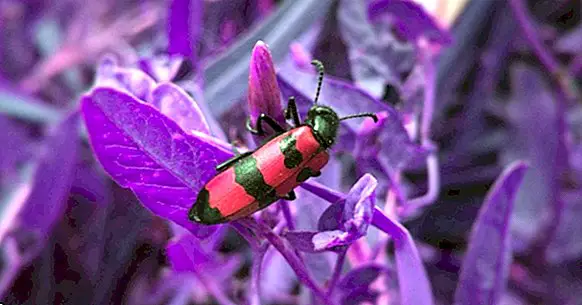Fear of insects (entomophobia): causes, symptoms and treatment
There are many phobias, some of them are very common and others not so much. Among the most frequent we can find the fear of insects or entomophobia, which also receives the name of insectophobia.
If you get paralyzed seeing a cockroach scampering around the living room of your house, or avoid traveling because you are obsessed with the idea that the hotel you're staying in is infested with bed bugs, you may suffer this disorder.
In this article we will talk about the pathological fear of insects , and we will delve into its causes, its symptoms and its consequences.
What is entomophobia?
Entomophobia is an irrational and persistent fear that manifests itself in the presence of insects, and can appear anywhere, whether camping on the mountain, walking in the park, going for a run on the beach or visiting a house rural. And is that this phobia, although it may seem ridiculous in some cases because of the harmlessness of some insects. It creates great discomfort for the person who suffers, who feels great anxiety and anguish and an exaggerated attempt to avoid the feared stimulus.
Although most insects are not harmful to humans and do not pose a threat, those who suffer from this phobia experience extreme anxiety at the mere thought or observation of an insect. People with entomophobia may feel ashamed and be aware of their fear, but are unable to cope and often require professional help to overcome it.
Any insect, be they spiders, wasps, butterflies, dragonflies or caterpillars can become the stimulus that elicits a phobia . However, forms of entomophobia more common are the phobia of bees and spiders.
You can know more about these phobias in our articles:
- Fear of bees (apiphobia): causes, symptoms and treatment
- Arachnophobia: causes and symptoms of extreme fear of spiders
Causes of fear of insects
To understand how a person develops this phobia it is necessary to understand how a phobia develops in general. Because phobias is an irrational fear, it is not a real danger, and you learn.
In most cases, the phobic ones developed this pathology as a consequence of a traumatic experience. This occurs due to associative learning called classical conditioning. You can learn more in our article "Classical conditioning and its most important experiments".
But people do not necessarily have to experience phobias in their own skin, but they can learn them by observation, in what is known as vicar conditioning. Further. Some irrational beliefs can encourage the development of these pathologies.
Some experts suggest that phobias can also be due to the fact that the body of the human being is biologically prepared to fear easily. This would be so because fears develop in the primitive part of the brain and not in the neocortex, the most rational part. This explains why phobias do not respond to logical arguments.
This can be understood because this type of behavior could have helped the human species to survive. But they can cause serious problems nowadays, by developing fears without any apparent risk .
Symptoms of this phobia
When a person suffers this phobia and other individuals try to make him see reason about the non-dangerousness of an insect, these logical arguments do not help much, and the symptoms drastically affect the ability of the phobic to live normally .
Like all phobias, entomophobia or insectophobia is a condition that must be taken seriously, because it can be disabling . The symptoms affect the individual on a cognitive, behavioral and physical level. Among the first symptoms are fear, anguish, lack of concentration or catastrophic thoughts. As a behavioral symptom, the avoidance attempt of the phobic stimulus is characteristic. And as physical symptoms, the most common are the sensation of suffocation, hyperventilation, headache, nausea or stomach pain.
Treatment of entomophobia
The classical treatment of phobias aims to eliminate the association between stimulus and response, so cognitive behavioral techniques, also known as second-wave behavior therapy, are often used with some frequency. The therapist can help the patient overcome the phobia through these techniques. The most common are relaxation and breathing techniques and exposure techniques .
But the technique that is most used in this type of treatment is systematic desensitization, which includes the two previous ones, which consists of exposing the patient, gradually, to the phobic stimulus.That is, you can start by exposing yourself to photographs of insects and later to real insects. This method, in addition, allows to learn coping strategies, among which the relaxation and breathing techniques stand out. Many patients have successfully completed a successful systematic desensitization program. If you want to know more about this technique, you can read our article: "What is systematic desensitization and how does it work?".
At present, other therapeutic methodologies can also be used, such as cognitive therapy based on Mindfulness and acceptance and commitment therapy.
In addition, with the development of new technologies, new ways of treating this pathology have appeared. An example of this is virtual reality, which has proven to be very effective in exposing the patient to phobic stimuli. On the other hand, Apps for smartphones have appeared that include psychotherapeutic tools to treat these irrational fears .
- You can know more in our article "8 apps to treat phobias and fears from your smartphone"



















